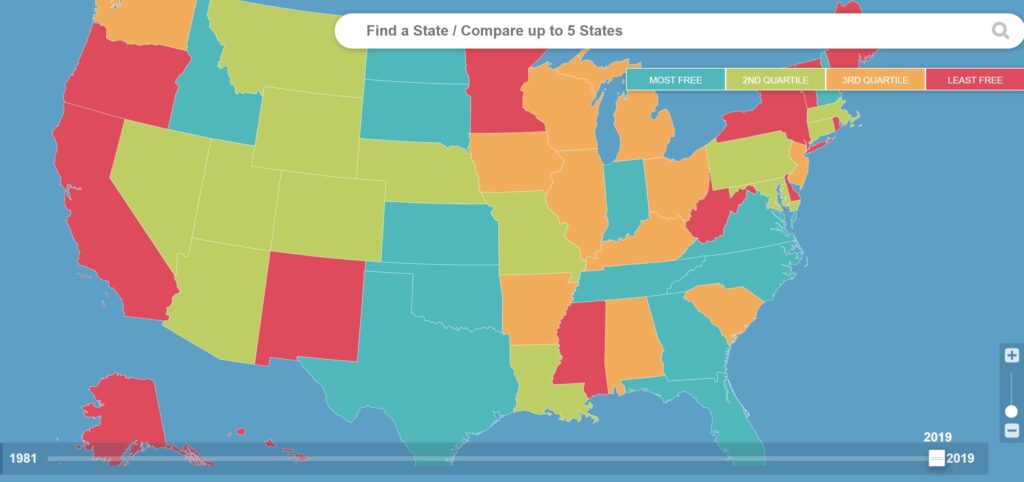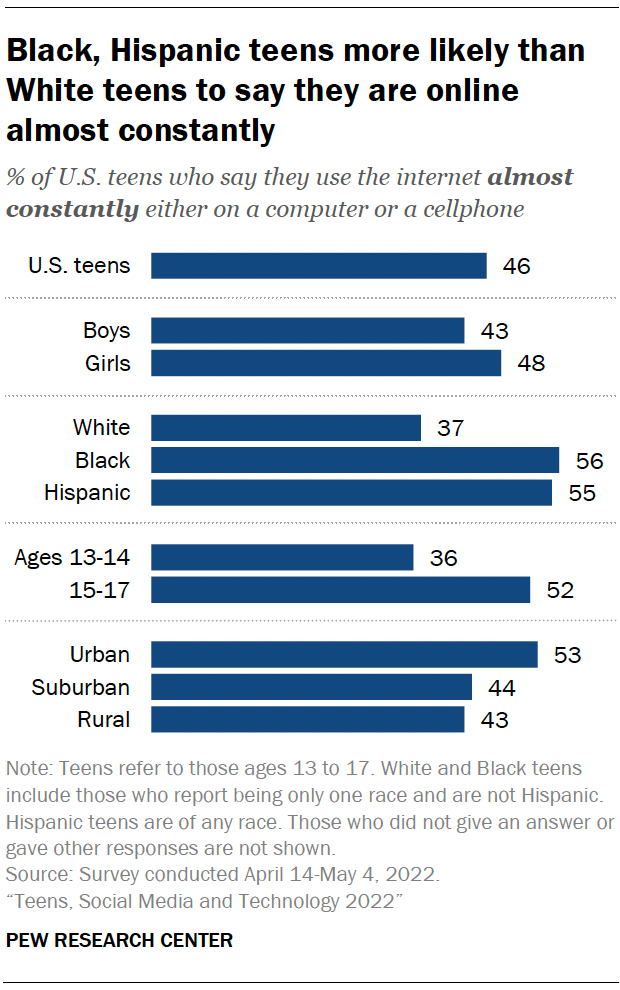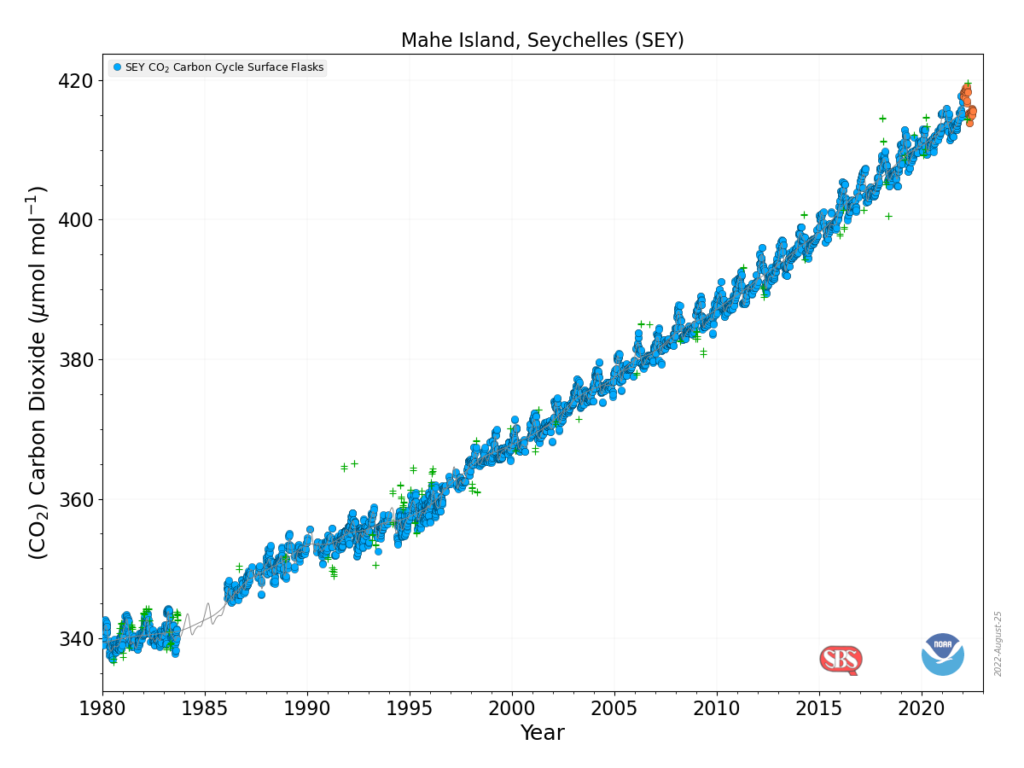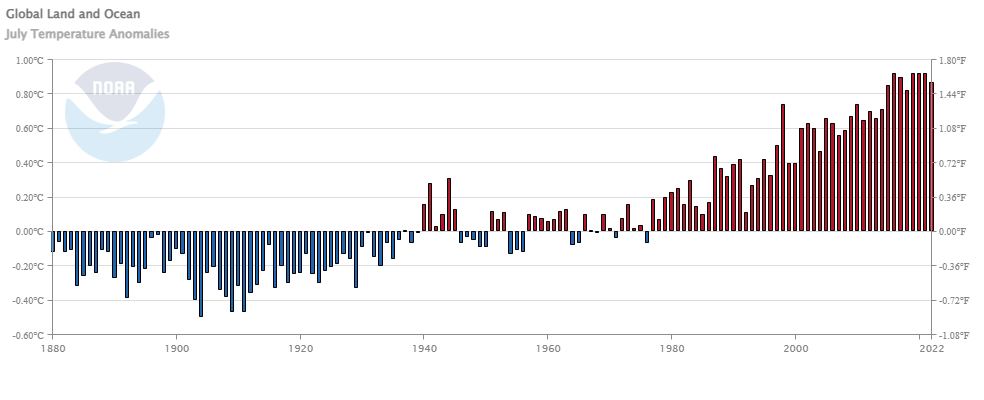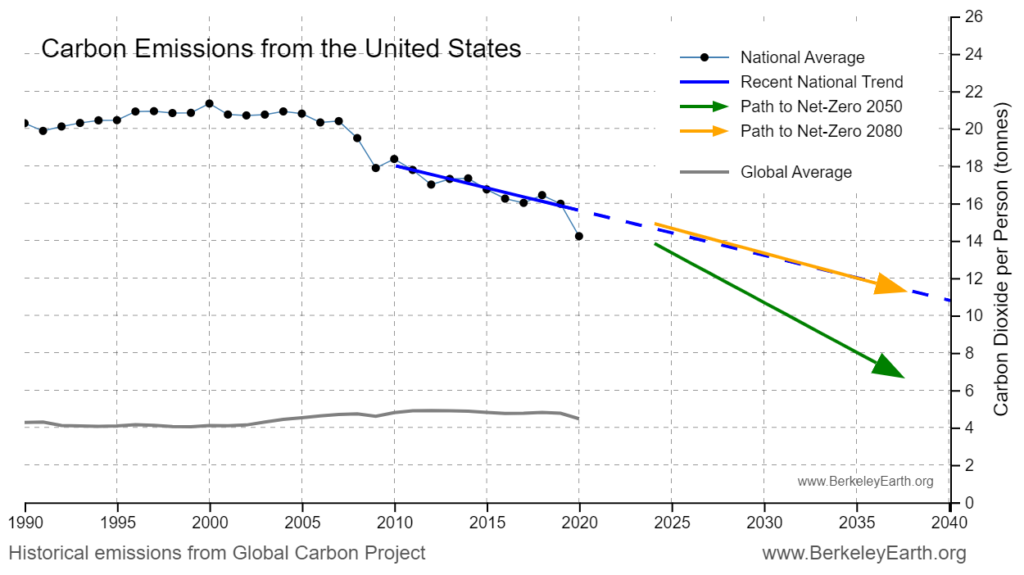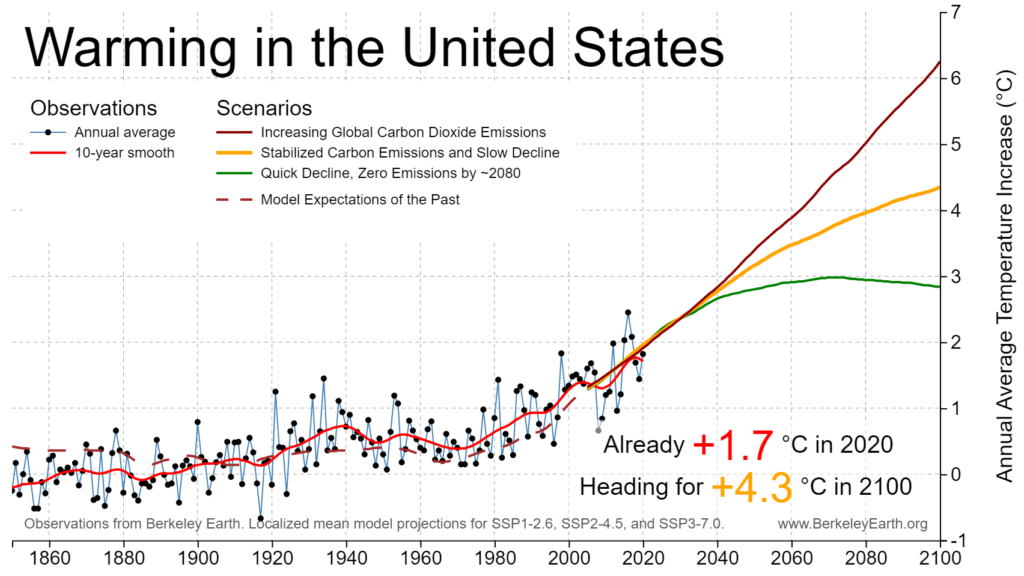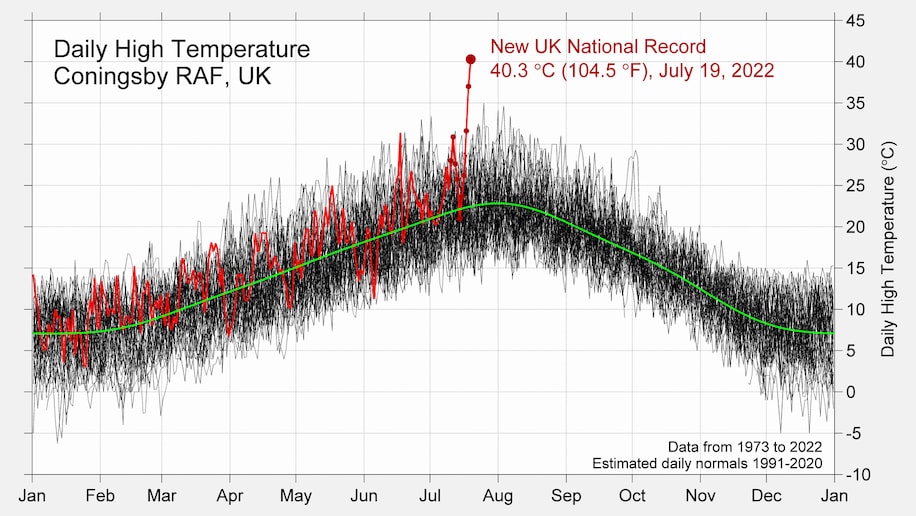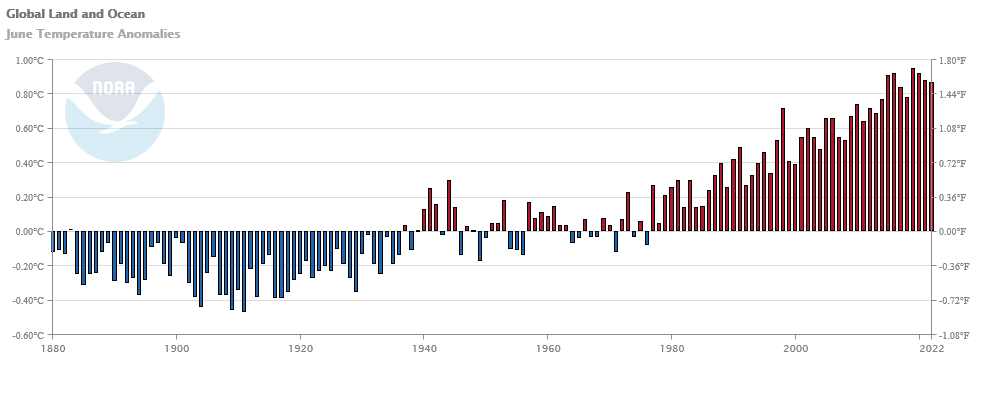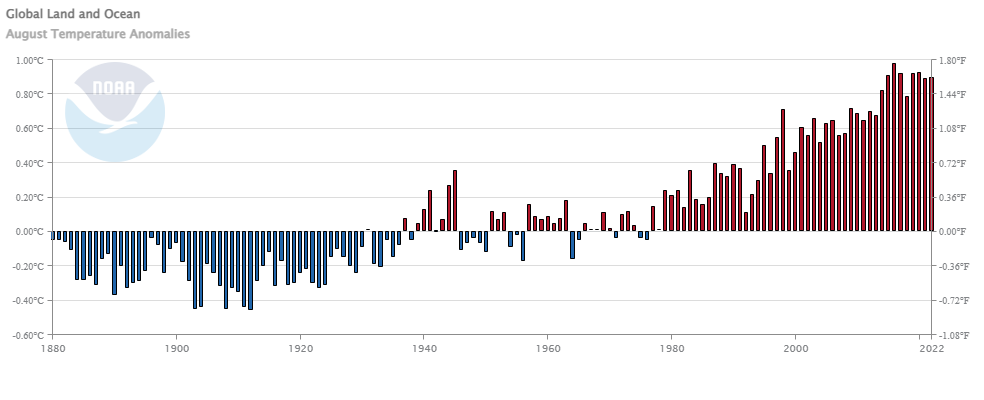 From NOAA’s August 20022 Global Climate Report:
From NOAA’s August 20022 Global Climate Report:
The August 2022 global surface temperature departure was the sixth highest for August in the 143-year record at 0.90°C (1.62°F) above the 20th century average of 15.6°C (60.1°F). The ten warmest Augusts on record have all occurred since 2009. August 2022 also marked the 46th consecutive August and the 452nd consecutive month with temperatures, at least nominally, above the 20th century average.
Highlights:
The contiguous U.S. had its eighth-warmest August on record. For the second month in a row, the contiguous U.S. monthly average minimum temperature was record warm.
Spain had its second-warmest August on record after August 2003.
The Royal Meteorological Institute confirmed that Belgium had its warmest August since records began in 1833.
Time series data is available at the top of the page.
